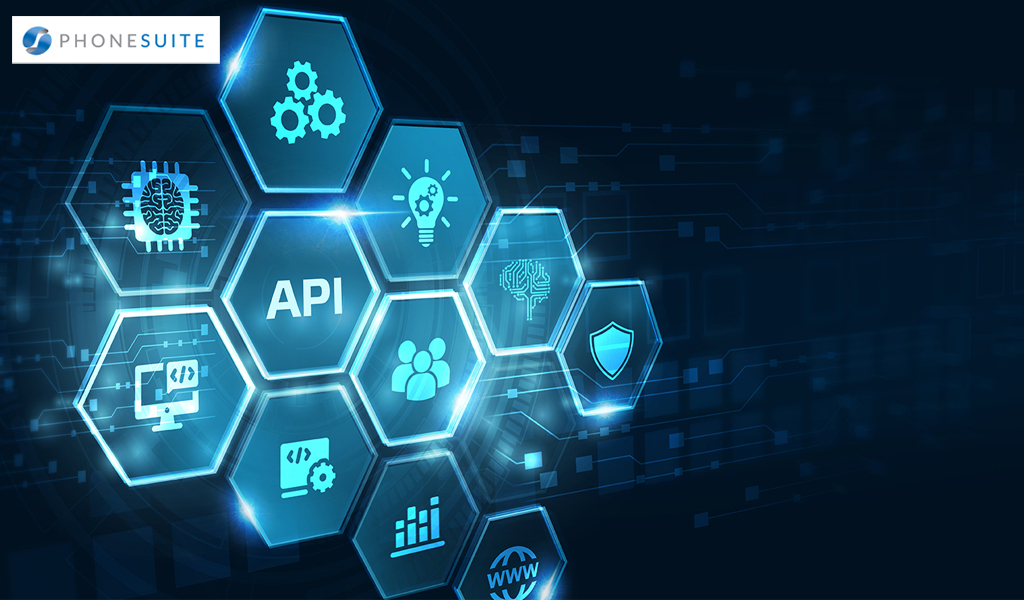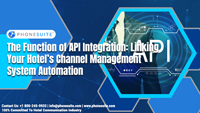In hospitality, every guest interaction depends on connected systems. API integration ensures your PMS, channel manager, booking engine, and CRM exchange data in real time – keeping rates, inventory, and guest profiles consistent across every touchpoint.
This blog post will give you an in-depth look at everything from API integration to connecting your switch with channel management systems
What is API Integration in Hospitality?
API integration, or Application Programming Interface integration, is a process that enables different software applications to communicate and share data with each other. In the context of a hotel business, API integration involves connecting various systems and applications, allowing them to work together seamlessly.
How API Integration Helps Your Hotel Business
API integration is crucial for streamlining operations, improving efficiency, and enhancing the overall performance of the hotel business. Here’s how API integration helps your hotel business:
Automated Processes
API integration automates the exchange of data between different systems, reducing the need for manual data entry and minimizing errors. This automation improves the efficiency of various hotel processes, such as reservations, room allocations, and billing.
Real-time Data Synchronization
Integration ensures that data is synchronized in real time across different systems. This is particularly important for keeping room availability, rates, and booking information consistent across the hotel’s property management system (PMS), website, and various online travel agencies (OTAs).
Centralized Management
API integration allows hoteliers to manage multiple aspects of their business from a central platform. This includes overseeing reservations, room availability, rates, and guest information without the need to switch between different applications.
Enhanced Guest Experience
By integrating various systems, such as the PMS, booking engine, and customer relationship management (CRM) software, hotels can provide a smoother and more personalized guest experience. This may include personalized check-in processes, targeted marketing based on guest preferences, and efficient handling of special requests.
Optimized Revenue Management
The integration enables hotels to implement dynamic pricing strategies more effectively. By analyzing real-time data on occupancy, demand, and market conditions, hotels can adjust room rates dynamically to maximize revenue and stay competitive.
Efficient Channel Management
For hotels utilizing online distribution channels, API integration with channel managers ensures that room availability, rates, and booking information are consistently updated across various platforms. This reduces the risk of overbooking and ensures that the hotel’s online presence remains accurate and reliable.
Benefits of API Integration for Hotels
API integration empowers hotels to operate as connected, intelligent systems rather than a collection of isolated tools. Beyond saving time, it enhances data accuracy, operational control, and the guest experience, while enabling continuous adaptation to new technologies.
Automated Workflows That Remove Busywork
Connected systems handle repetitive tasks like posting reservations, syncing folios, and updating restrictions automatically. This reduces manual data entry, minimizes human error, and allows staff to focus on delivering exceptional service.
Real-Time Synchronization Across Channels
Room rates, availability, and bookings update instantly across your PMS, brand site, and OTAs. Real-time synchronization eliminates overbookings, maintains rate parity, and ensures consistency for guests across every platform.
Centralized Control With Native Integration
When integrations are built directly into your core systems, hotel teams gain a single source of truth. Policies, pricing rules, and allotments flow seamlessly through your stack improving response speed and decision accuracy.
Personalized Stays Through Unified Guest Profiles
API integration connects PMS, CRM, and messaging systems, consolidating guest data into one dynamic profile. This supports personalized offers, smoother check-ins, and relevant upsells that enhance satisfaction and loyalty.
Data Analytics and Reporting
Integrated systems unify data from every channel, giving revenue managers and marketers deep insights into performance trends, booking patterns, and guest behavior. This enables informed pricing and marketing decisions that directly boost ROI.
Revenue Agility from Cleaner Signals
With accurate, timely data, your RMS or pricing engine can react faster to market conditions. Hotels gain the confidence to adjust rates, length-of-stay rules, and restrictions in real time to protect revenue.
Efficient Distribution via Channel Manager API
A robust channel manager API keeps rate plans and inventory aligned across distribution partners. This streamlines operations, minimizes overselling, and ensures your property reaches the right audience at the right time.
Adaptability to New Technologies
API-driven ecosystems make it easy to integrate emerging tools — from AI-powered chatbots to contactless check-in apps — without disrupting existing workflows or infrastructure.
Mobile App Integration
APIs enable seamless mobile experiences, letting guests check in, unlock rooms, or request services from their phones. It’s a direct upgrade to convenience and guest engagement.
Data Security and Compliance
Modern APIs use encrypted protocols and authentication methods to protect sensitive guest and payment information. Automated reporting also simplifies regulatory compliance, ensuring your hotel stays audit-ready.
How to Integrate Hotel Systems Through API
Integrating systems through API (Application Programming Interface) in hotels is a key strategy to streamline operations, enhance efficiency, and provide a seamless experience for both hotel staff and guests. Here’s a step-by-step guide on how to effectively integrate systems using APIs in a hotel setting:
Identify Integration Needs
Assess your hotel’s specific requirements for integration. Identify the systems that need to be connected, such as the Property Management System (PMS), channel manager, booking engine, CRM, key card systems, and any other relevant applications.
Choose API-Friendly Systems
Select systems and software applications that offer robust APIs and are designed to be integration-friendly. Check the documentation provided by the vendors to understand the capabilities of their APIs and ensure they align with your integration goals.
Understand API Endpoints
Familiarize yourself with the API endpoints provided by each system. API endpoints are specific URLs that allow applications to communicate with each other. They define the functionalities and data that can be accessed or modified through the API.
Authentication and Security
Implement secure authentication mechanisms for accessing APIs. This may involve using API keys, OAuth tokens, or other secure methods to ensure that only authorized users and systems can interact with the APIs. Prioritize data security to protect sensitive information.
Data Mapping and Translation
Understand the data structures and formats used by each system. Create a mapping document that defines how data will be transferred and translated between systems. This step is crucial for maintaining consistency and accuracy in the integrated data.
Choose Integration Middleware (if necessary)
Depending on the complexity of your integration, you may choose to use middleware or integration platforms. These tools can simplify the process by providing pre-built connectors, data transformation capabilities, and monitoring tools to manage the flow of data between systems.
Testing
Conduct thorough testing of the integrated systems in a controlled environment before deploying the solution in a live setting. Test various scenarios, including bookings, cancellations, rate updates, and other common transactions, to ensure the integration functions as expected.
Staff Training
Train your staff on how to use the integrated systems. Ensure they understand the new workflows, how data is shared between systems, and how to troubleshoot common integration issues. Proper training minimizes errors and enhances overall efficiency.
Regular Review and Optimization
Periodically review the integration processes to identify opportunities for optimization. Assess the efficiency of data flow, system performance, and the overall impact on operational workflows. Make adjustments as needed to enhance the integration.
By following these steps, hotels can successfully integrate their systems using APIs, creating a connected and efficient technological ecosystem. This integration contributes to improved guest experiences, streamlined operations, and the ability to adapt to the dynamic landscape of the hospitality industry.
Hotel API Integration Examples That Matter
Website booking engine ↔ PMS: Create/modify/cancel reservations in real time; sync availability and restrictions to reduce overbookings.
- Channel manager ↔ PMS: Push rate/availability updates instantly; ingest OTA bookings as confirmed reservations with payment tokens.
- POS ↔ CRM/loyalty: Post in-stay spend to guest profiles for targeted offers and tiering.
- RMS ↔ PMS/CRS: Exchange pickup, price, and LOS rules to drive revenue agility.
- Payments ↔ PMS: Tokenized cards flow through reservations and folios; minimize PCI scope.
Modernizing Legacy Systems With APIs
If your PMS is older or on-premise, an API gateway or adapter can expose only the endpoints you need, availability, rates, restrictions, reservations, without a full rip-and-replace. Start with read-heavy use cases, then graduate to write paths. This staged approach reduces risk while unlocking integrations with RMS, CRM, and hotel booking API integration on your brand site.
Build vs Buy: Custom, iPaaS, or Low-Code
When it comes to integrating hotel systems, choosing between custom-built, iPaaS, or low-code approaches depends on your technical resources, data sensitivity, and business pace. Each model carries distinct trade-offs in control, scalability, and cost.
Custom Integration
Custom development gives hotels the deepest control over their integrations, enabling precise logic, advanced security, and alignment with proprietary workflows. It’s ideal for edge cases, for instance, when connecting legacy PMS or handling bespoke loyalty data. However, it brings higher setup costs, long development timelines, and ongoing maintenance demands. You’ll need internal technical expertise and a plan for versioning, scaling, and support continuity if key staff leave.
iPaaS (Integration Platform as a Service)
An iPaaS solution offers a centralized layer for managing all your API connections, data mapping, and monitoring. It provides prebuilt connectors for most hospitality systems, making it faster and more predictable to deploy. Costs are subscription-based, with scalability and observability (logs, alerts, retries) built in. The trade-off is less control over proprietary data flows and dependence on the vendor’s roadmap, but for most hotels, it delivers a strong balance of flexibility and reliability.
Low-Code Integration
Low-code tools empower non-technical users to automate data exchange between systems using visual interfaces. They excel in speeding up delivery for marketing, operations, or finance teams that need quick wins without full developer support. Yet, without proper governance, low-code integrations can sprawl — leading to version drift, security gaps, or untracked workflows. Setting clear ownership and documentation standards is key.
Choosing the Right Path
Select your approach based on:
- Change frequency – how often your systems and data models evolve.
- Data sensitivity – compliance with PCI DSS, GDPR, and internal security policies.
- Connector availability – whether prebuilt APIs exist for your PMS, CRS, OTAs, or CRM.
- Observability – visibility through logs, alerts, and error tracking.
- Commercial terms – API throttling limits, overage fees, and SLAs.
The right integration strategy aligns technical depth with operational agility — ensuring your hotel tech stack remains scalable, compliant, and ready for continuous innovation.
When (and When Not) to Use a Unified API
Unified APIs abstract multiple vendors behind one interface, accelerating integrations and reducing one-off mappings. They shine when you must connect several non-differentiating systems (e.g., messaging or analytics).
They’re less ideal where hotel semantics matter, rate plans, room-type hierarchies, restrictions, because vendor nuances are strategic. Use them to speed plumbing; integrate natively where your data model must be exact.
Benefits of Connecting Your Switch and Channel Manager to an API Platform
Connecting your switch (Property Management System – PMS) and channel manager to an API platform in a hotel environment offers a myriad of benefits, enhancing efficiency, accuracy, and overall operational performance. Here are key advantages of leveraging an API platform for integration:
Increased Revenue Opportunities
Seamless integration allows hotels to maximize revenue opportunities by efficiently managing room rates across different channels. Dynamic pricing strategies, enabled by real-time data, help hotels capitalize on demand fluctuations and optimize revenue potential.
Adaptive Marketing Strategies
The integration of APIs enables hotels to gather comprehensive data on guest behavior and booking patterns. This information can be leveraged to create targeted marketing campaigns and promotions, enhancing the effectiveness of marketing efforts and driving more direct bookings.
Faster Response to Market Changes
API platforms empower hotels to respond rapidly to market changes. Whether adjusting rates based on changing demand or quickly adapting to industry trends, real-time data provided by the integrated systems ensures that the hotel remains agile and competitive.
Competitive Advantage
Hotels that leverage API integration gain a competitive advantage in the industry. The ability to adapt quickly, provide accurate information, and offer seamless booking experiences positions the hotel as a preferred choice among guests and partners.
Facilitation of Contactless Technologies
As the hospitality industry embraces contactless technologies, API integration plays a vital role. Connecting the PMS with contactless check-in kiosks, mobile apps, and keyless entry systems through APIs provides guests with a more secure and convenient experience.
Improved Guest Loyalty Programs
Integration allows for a seamless connection between the PMS and loyalty program systems. This facilitates the efficient management of guest loyalty programs, ensuring accurate point accruals, personalized offers, and a cohesive loyalty experience across all touchpoints.
Choosing PMS & Channel Partners (Buyer Checklist)
Proven Integrations With Your Target Endpoints
Ask vendors to demonstrate live connections that mirror your use cases, reservations, availability/rates/restrictions, modifications, and cancellations. Look for stable API integration architecture, clear rate limits, and production references from hotels like yours.
Coverage of Critical Hospitality Use Cases
Your stack should support end-to-end operations: room inventory tracking, pricing rules, payments, and reporting. If you plan API hotel connections to your brand site, confirm how the booking engine exchanges data with PMS and channel tools in real time.
Support SLAs for Integration Development & Operations
Incidents happen. You need 24/7 coverage, defined response times, change-management clarity, and proactive communication around deprecations and versioning.
Ecosystem Fit & Third-Party Extensibility
Your CRM, RMS, payment gateway, and messaging tools should have verified connectors or straightforward paths to integrate. Avoid lock-in by favoring open docs and transparent API integration process guidelines.
Multi-Property Readiness Without Added Complexity
Portfolio controls with property-level overrides let corporate set standards while GMs stay nimble. Confirm how shared rate plans, room types, and restrictions are modeled across properties.
Commercial Flexibility With Transparent Limits
Contracts should scale with seasonality and growth. Make sure throttling, overage pricing, and premium endpoint access are documented, no surprises during demand spikes.
API Types & Protocols Hotels Actually See
- Most modern hospitality stacks rely on REST (JSON over HTTPS) for availability, rates, and reservations.
- Older PMS or payment flows may still use SOAP/XML.
- Webhooks push events (new bookings, cancels, modifications) in real time.
- GraphQL can simplify complex reads, e.g., retrieving guest + stay + folio data in one request.
Choose vendors with clear docs, versioning policies, and non-breaking change practices.
Ways to Monitor Your API Connections for Security Purposes
Monitoring API connections for security purposes is crucial in hotels to safeguard sensitive data, protect against potential threats, and ensure the integrity of the integrated systems. Here are key ways to monitor API connections for security in a hotel setting:
Implement Secure API Authentication
Enforce strong authentication mechanisms for API connections. Use secure methods such as API keys, OAuth tokens, or other industry-standard protocols to authenticate and authorize access. Regularly audit and manage access credentials to prevent unauthorized entry.
Use HTTPS for Data Transmission
Ensure that API connections use the HTTPS protocol for data transmission. HTTPS encrypts the data exchanged between systems, protecting it from interception or tampering. Avoid using unencrypted HTTP connections, especially when dealing with sensitive information.
Monitor API Logs
Regularly review and analyze API logs. Logs contain valuable information about API requests, responses, and potential security events. Implement a logging system that records relevant details, including the source of requests, timestamps, and response statuses.
Implement Rate Limiting
Introduce rate-limiting mechanisms to prevent abuse or malicious attacks through APIs. Setting limits on the number of requests within a specified time frame helps protect against denial-of-service (DoS) attacks and ensures the stability of API connections.
Perform Regular Security Audits
Conduct regular security audits of your API connections. Assess vulnerabilities, perform penetration testing, and identify potential weaknesses in the security infrastructure. Address any issues promptly to maintain a robust security posture.
Employ Web Application Firewalls (WAF)
Implement web application firewalls to filter and monitor incoming and outgoing API traffic. WAFs can detect and mitigate various types of attacks, such as SQL injection, cross-site scripting (XSS), and other web application vulnerabilities.
Encrypt Sensitive Data
Encrypt sensitive data at rest and in transit. Apply encryption to protect information stored in databases and ensure that data exchanged between systems via APIs is encrypted. This helps prevent unauthorized access to confidential information.
Use API Security Standards
Adhere to industry best practices and security standards for API development and integration. Standards such as OAuth 2.0 and OpenID Connect provide secure authentication and authorization mechanisms, enhancing the overall security of API connections.
Monitor Anomalies and Intrusion Detection
Implement anomaly detection and intrusion detection systems to identify unusual patterns or suspicious activities in API traffic. Set up alerts to notify security teams of potential security incidents that require investigation.
Regularly Update API Components
Keep API components, including libraries, frameworks, and software, up to date. Regularly apply security patches and updates to address known vulnerabilities and protect against security threats associated with outdated software.
Implement Two-Factor Authentication (2FA)
Introduce two-factor authentication for accessing APIs. This adds an extra layer of security by requiring users to provide a second form of identification, such as a temporary code sent to a mobile device, in addition to their regular credentials.
Secure APIs from Cross-Site Request Forgery (CSRF)
Protect APIs from CSRF attacks by implementing anti-CSRF tokens. These tokens ensure that requests made to APIs originate from legitimate sources and help prevent unauthorized actions on behalf of authenticated users.
Regularly Train Staff on Security Protocols
Provide regular training for staff involved in managing and monitoring API connections. Ensure that they are aware of security best practices, recognize potential threats, and understand the procedures for responding to security incidents.
Establish Incident Response Plans
Develop and document incident response plans specific to API security. Clearly outline the steps to be taken in the event of a security incident, including communication protocols, mitigation strategies, and post-incident analysis.
Transforming Your Hospitality Business Today with PhoneSuite
A well-planned hotel API integration reduces friction for guests and teams while improving revenue accuracy. If you’re evaluating telephony or guest communications alongside integration work, Phonesuite can help you align voice, messaging, and integrations.
If you’re ready to make the switch to a modern & innovative phone system, talk to Phonesuite today.
Curious about the cost or installation process? Get in touch today.
Hotel API Integration FAQs
What systems should I integrate first?
Start where risk and value intersect: channel manager ↔ PMS (to prevent overbookings), booking engine ↔ PMS (to lift direct bookings accuracy), and RMS ↔ PMS/CRS (for pricing agility). Add CRM and payments once core availability/rates/reservations are stable.
Do I need an integration platform, or can I build a custom?
If you have a small, stable set of systems and strong in-house engineering, custom can work. If you manage multiple properties, channels, and rapid change, an iPaaS or governed low-code platform speeds delivery and simplifies monitoring.
How do I keep guest data secure across integrations?
Use HTTPS/TLS, OAuth or scoped API keys, role-based access, and tokenization for payment data. Encrypt data in transit and at rest, maintain audit logs, and run regular pen-tests aligned to PCI/GDPR where applicable.
What’s the difference between “native integration” and “connectors”?
“Native integration” is built into the product itself and maintained by the vendor. “Connectors” expose standardized endpoints to map data between systems. Both can work, what matters is reliability, versioning discipline, and support for SLAs.
How do I measure success after go-live?
Track booking error rates, time-to-update for rates/availability, parity mismatches, overbooking incidents, RMS recommendation adoption, and incremental direct-booking conversion. Operationally, measure manual touches removed and average resolution time for integration incidents.




